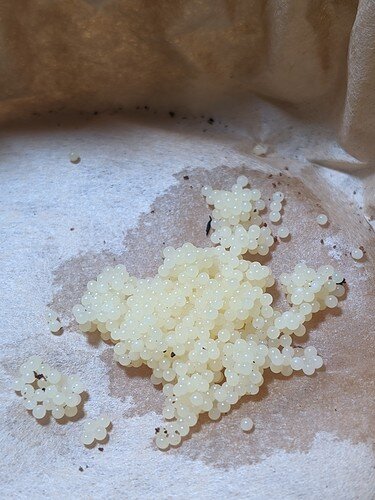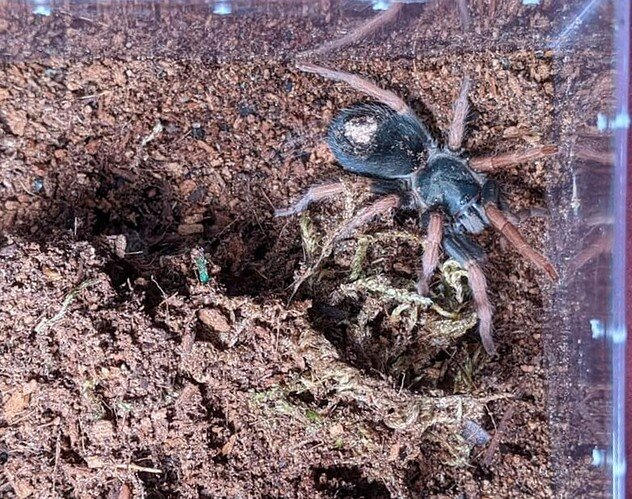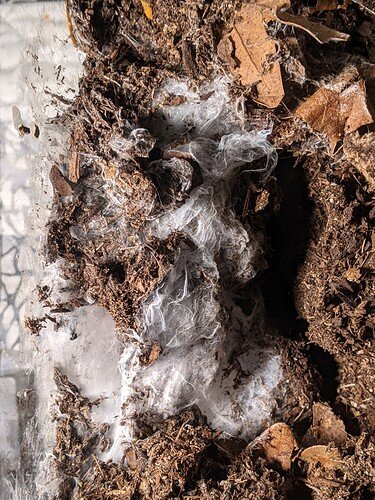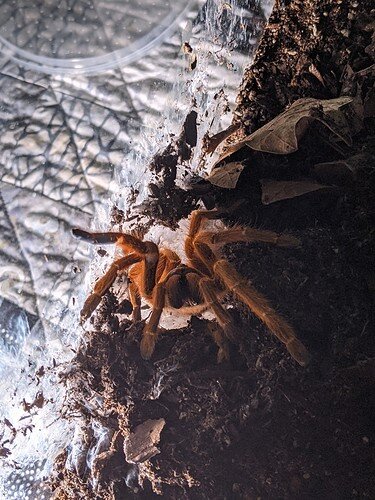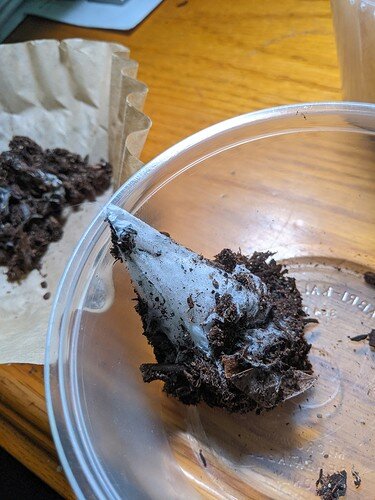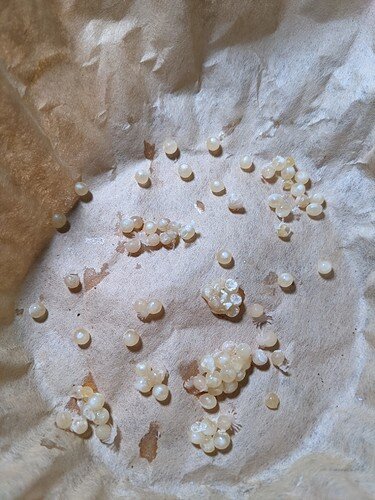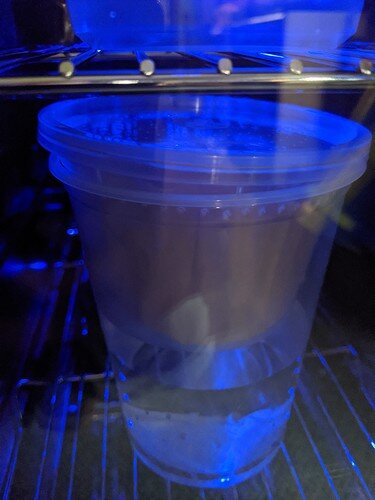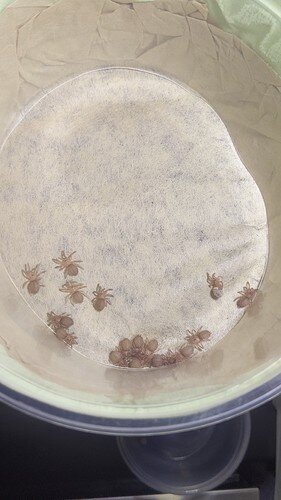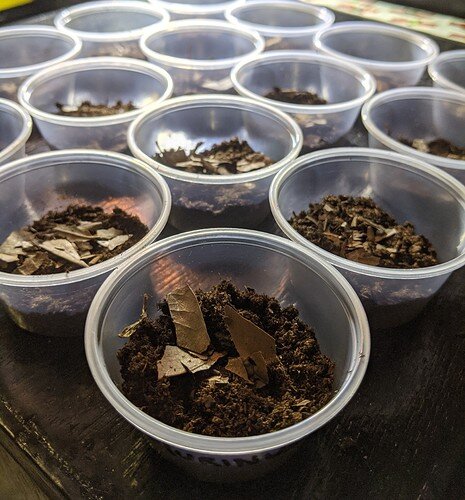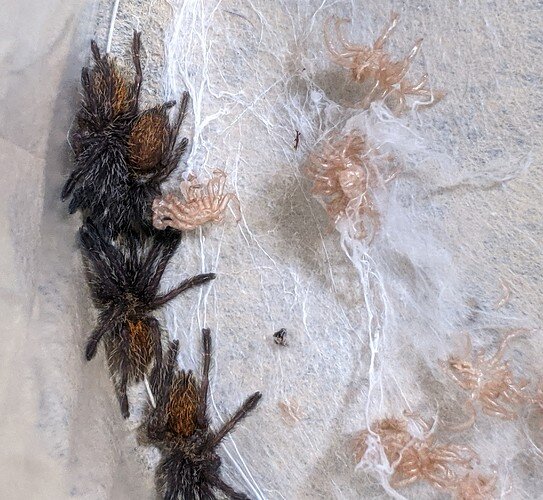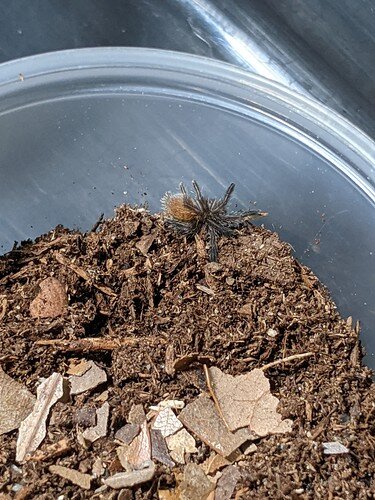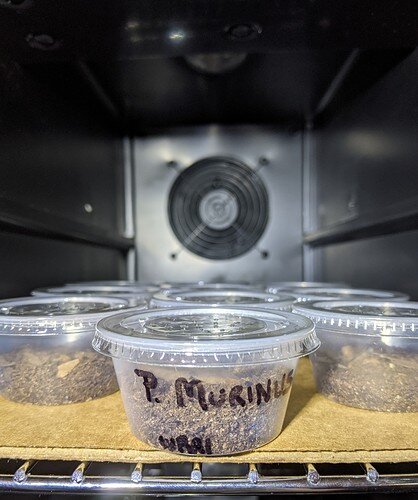So today, I finally got around to pulling the eggsac from my P. murinus that I bred a few months back, and that was… Exciting. Haha. Anyway, here’s a few shots from the process. And this was something I’ve never encountered before with this species, but after I pulled the sac out, she was obviously pretty upset, slapped some and did something called stridulation, which I wasn’t aware was an attribute of this species. After getting the sac out and open, there was only a few eggs that weren’t viable, and even quite a few EWL’s wiggling around! They’re all in the incubator now, along with another eggsac I found accidentally earlier today, which is more than likely all dud eggs since she’s molted to mature in my care and never been able to breed (I’ve not heard of parthenogenesis in tarantulas before), but I figured I’d put them in, just in case.
That’s cool, keep us updated with the slings’ progress. Some species have been known to double clutch so that could be a possibility.
Yes, I’ve seen it happen with my P. irminia, but the 2nd eggsac didn’t last very long, most likely there was a problem with it but she ate it almost immediately (and on Mother’s Day too!)… I don’t know this species to do that, double clutch that is, but I do also have a MM that needs bred before the inevitable, anyway, so she’ll more than likely have another sac laid before the end of the year either way.
So fascinating but yet so creepy…
Awesome. Following this one for sure!
I was going to upload the short video that was clipped from, so you could see them crawling around, they’re not just wigglers anymore, but you can’t, due to a file type restriction. 
Thats so cool! I’m definitely going to try breeding my A. chalcodes. The whole development process from eggs to adults is just fascinating.
Hoping my jumping spider eggs hatch in the next few days.
Will any of those little guys be available at some point?
They’re working on making their 2nd instar, they’ll be little fuzzy things then, and a few will be. This being her first successful clutch, there wasn’t too many, so we’ll see what happens but more than likely the ones that do move will go local. But I’ll keep you updated on that, too!
Why exactly do you take them out of the egg sack? I never understood why one does that.
A lot of it has to do with the management of the young, for a number of reasons. While they can definitely develop in a sac just fine, there’s differences in the scenarios between leaving growing spiderlings (slings) inside the sac vs. monitoring the stages in an incubator that affect the rate of survival, such as humidity and temperature control, because it’s easier to spread a single layer of eggs/EWLs in an incubator to ensure the highest rate of survival for the clutch, rather than leaving them in the sac to either grow or become food. And since further into their lifecycle stages (instars), most species of tarantula tend to cannibalize, you want to be able to monitor when it’s safe to separate them, to avoid losses. The mother is also a safety factor, because they will eat sacs, sometimes for no apparent reason. And in the case of this species, there is no egg turning required, so the mother as a guardian isn’t extremely necessary. But the main reason behind not allowing a sac to develop naturally is containment of the young, hence why the sac is removed in the first place, because 50+ super tiny tarantulas running around in an enclosure not designed for them typically doesn’t go well, with things such as safety concerns to consider like water deep enough to drown in, the sides or too high of a ceiling to fall from, etc. Escape is also a concern, as most adult tarantula enclosures have ventilation small enough to keep the adults and food in, but not small enough that some earlier stages of sling couldn’t slip right out. Granted the enclosure is made well enough to accommodate slings, and especially with communal species, this can work, but if you’re trying to collect and manage slings, it’s a lot more work with adults and an active enclosure to navigate around to do so.
What a day. 
Love the slings!
